Beautiful Routes in Southern Vietnam: Scenic Motorbike Adventures
Southern Vietnam is a playful, sunlit patchwork of river swirls, sandy curves and mountain-green hideaways. If you love variety — from floating markets and rice-plain quiet to coral-fringed islands and red-earth highlands — this region dishes up contrasts in one tidy map. Below is a comprehensive, friendly travel guide to the beautiful routes in Southern Vietnam that will help you plan road trips, island hops, and slow explorations like a local.
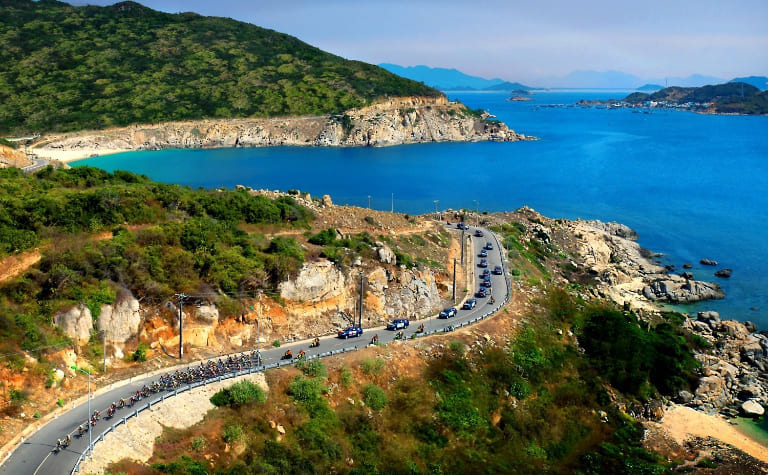
Why Routes in Southern Vietnam Are Worth Exploring
The Uniqueness of Southern Vietnam’s Landscapes
The roads that wind through Southern Vietnam are unforgettable because they let you see so many different places. One moment you’re winding around misty mountains that lead to wide, breathtaking views; the next, you’re floating next to calm, sparkling seas. The region has a mix of calm and raw beauty, from the wind-swept sand dunes of Mui Ne to the lush, breathing marshes of the Mekong Delta. Each road has its own personality and rhythm, and every turn shows you a landscape that feels completely different.
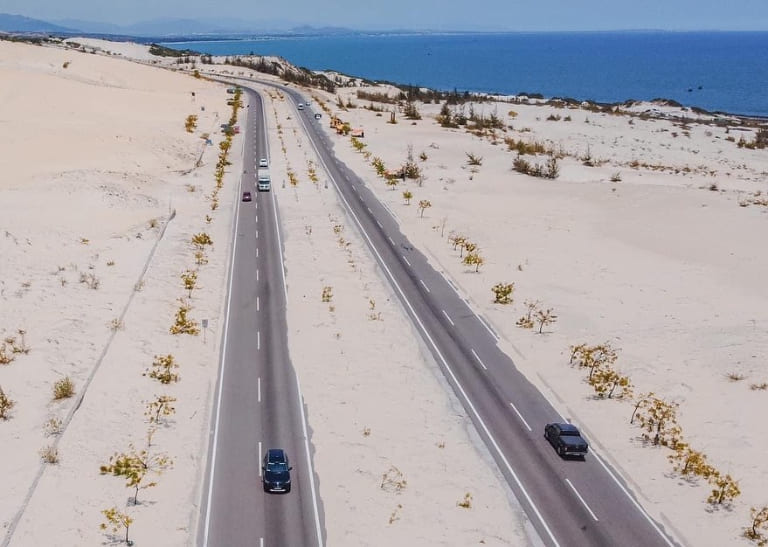
Adventure and Culture: The Perfect Mix
The views are beautiful, but the magic is in the life that happens along the way. When you travel through Southern Vietnam, you enter a living tapestry of warmth and tradition. People who live there still follow the traditions that have been passed down through the years. You eat food made from recipes that can’t be found anywhere else, and with every meal, you feel the cultural richness that makes this part of the world so vibrant.
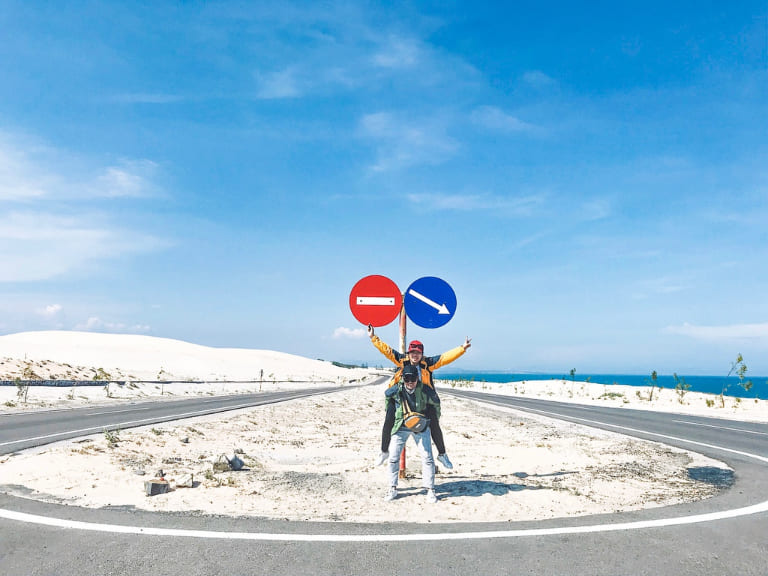
Top Beautiful Routes in Southern Vietnam
Some of the most beautiful and moving motorbike routes in the world are in southern Vietnam. These are paths where wild beauty meets living history, and every mile draws you deeper into the region’s spirit. These routes feel like a personal discovery for travelers who want to have an adventure or find Vietnam’s more hidden, less well-known places.
1. The Ca Na to Phan Rang Route
The road from the quiet coastal town of Ca Na in Ninh Thuan Province to Phan Rang is like a love letter to the sea. The 30-kilometer stretch takes you past beaches that have never been touched, endless blue horizons, and dramatic rocky shorelines. The road is a moving picture of pure coastal magic, with the ocean breeze on one side and rough mountains watching over you on the other.
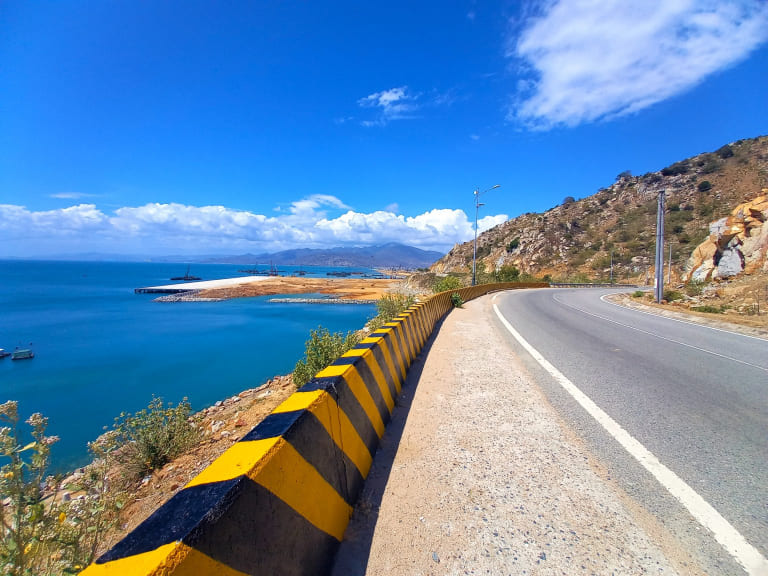
You get to see some of Southern Vietnam’s most famous sites along the way. The old Po Klong Garai Cham Towers stand quietly and proudly just outside of Phan Rang. Their beautiful architecture and intricate carvings, set against lush hills, give us a glimpse into the once-thriving Cham civilization.
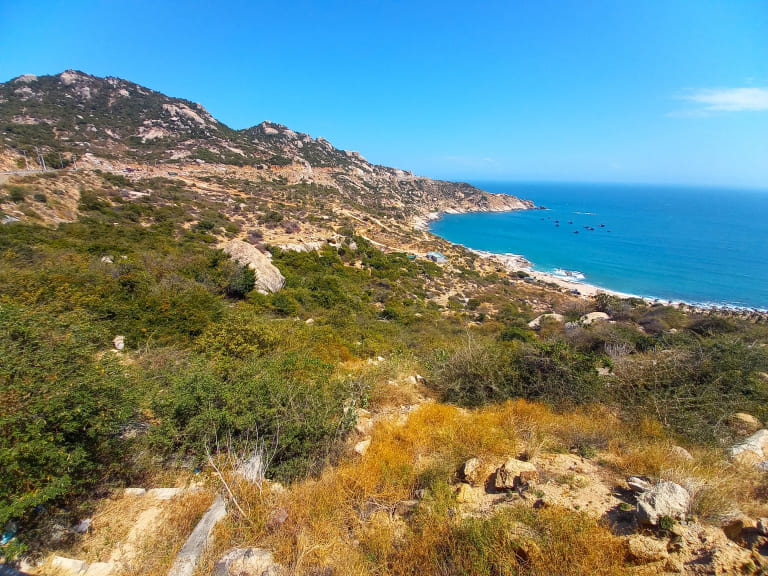
With its golden sands and gentle waves, Ca Na Beach is a great place to stop and relax or swim. The Bau Truc Pottery Village is also close to Phan Rang. Here, artisans use techniques that have been passed down through the generations to shape clay into beautiful ceramics in one of Vietnam’s oldest villages.
2. The Mekong Delta Route
The Mekong Delta is a place where water shapes the world and life grows. People in Vietnam love to call it the “Rice Bowl.” When you drive through this green area, it feels more like you’re floating through a living, breathing ecosystem than a road trip. You will travel through small villages, floating markets, and green fields that seem to go on forever. You will also cross winding rivers and calm canals.
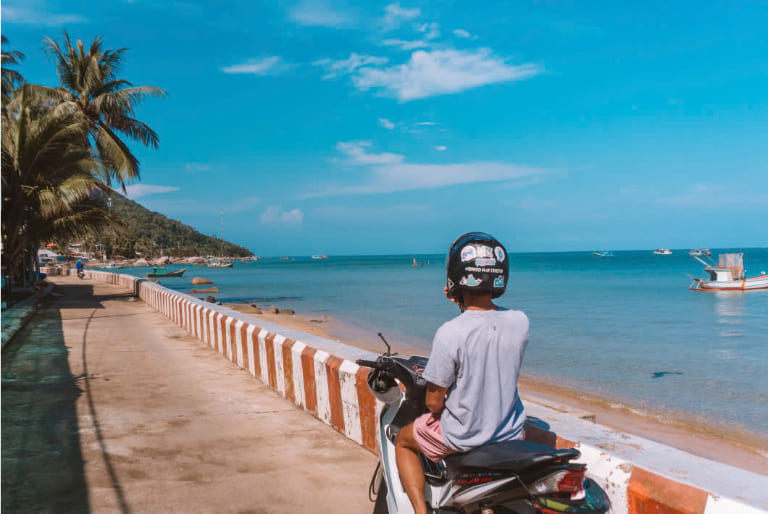
The famous Cai Rang Floating Market in Can Tho is one of the most memorable places to visit. It is one of the largest and most colorful markets in the delta. Come at dawn, when the river comes to life with boats selling fresh fruit, handmade goods, and tasty local dishes. It feels like stepping into the heart of everyday life. Later on, Ben Tre, the “coconut capital,” greets you with its peaceful charm. Here, whole communities make candy, home goods, and art out of the humble coconut, which is a big part of the culture and the land.
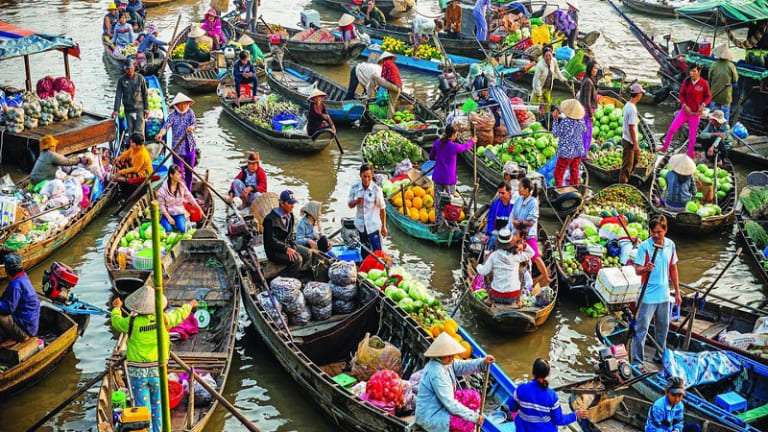
Taking a boat ride through the delta’s waterways adds to the peace and quiet and shows you parts of the area that you can’t see from the road. In the summer, it can be hot and sticky, so you need to wear light clothes and drink a lot of water. Let yourself stay here for a while. The people here are known for being friendly and having a lot of stories to tell.
>>> Explore: Ho Chi Minh to Mui Ne by Motorbike: The Ultimate Road Trip Guide
3. The Ho Chi Minh Trail | Routes in Southern Vietnam
The Ho Chi Minh Trail is more than just a path; it’s a trip through Vietnam’s living history. The trail was first cut out as a supply line during the Vietnam War. Now, motorbike riders can ride through places that have seen bravery, hardship, and strength. As you go, the past and present come together with every turn, with tall forests, winding rivers, and rough mountains all around you.

People who love history will find Khe Sanh Combat Base very moving. The old battlefield is now a museum, and it gives visitors a quiet but powerful look into the history of the war. The Cu Chi Tunnels, which are close to Ho Chi Minh City, let you go underground to see the complicated network that the Viet Cong used.
If you love both nature and history, it’s worth your time to take a short detour to Phong Nha–Kẻ Bàng National Park, even though it’s a little out of the way. It is one of Vietnam’s great natural wonders because of its limestone caves and many different kinds of animals.
4. The Phan Thiet to Mui Ne Route
The road from Phan Thiet to Mui Ne feels like a ride through a dream. The landscape here changes quickly from green to strange stretches of white and red sand dunes. These rolling, desert-like landscapes shine in the sun and offer endless chances for photography, exploration, or just standing still and taking in the vastness.

The Fairy Stream is one of the route’s best-kept secrets. It’s a calm, shallow river that flows through sand and limestone formations. The bright red and orange colors stand out against the green plants around it, making it a peaceful, almost otherworldly place to relax. Mui Ne Fishing Village, which is closer to the coast, gives you a glimpse into everyday life. Fishermen fix their nets, come back from the sea at dawn, and share the rhythms of a community shaped by the ocean.
5. The Con Dao Islands Route
The Con Dao archipelago is off the southern coast. It’s a peaceful place that feels like it’s far away from the busy mainland. The islands are a peaceful place to escape, with rugged cliffs, clear waters, and untouched beaches. Nature is still beautiful and moving there.
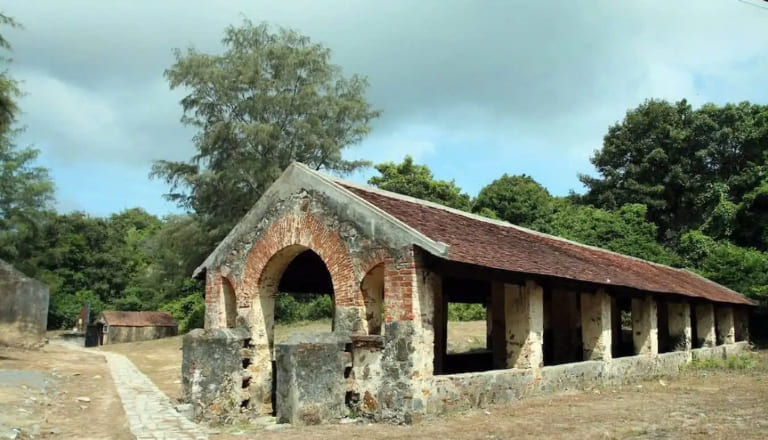
Con Dao Prison is one of the most powerful places to visit. It is a stark reminder of how hard life was on the islands when they were ruled by the French and Americans. It is now a museum that encourages quiet thought and shows how strong the people who were once imprisoned here were.
Dam Trau Beach and An Hai Beach are two of the best places on the island to relax and recharge. The calm waves and clear waters make them great for swimming, snorkeling, or just taking in the peace of a place that feels like it has always been there.
6. Saigon to Dalat by Motorbike
One of the most beautiful ways to get away from the fast pace of Saigon (Ho Chi Minh City) and see the landscapes of Southern Vietnam slowly unfold is to ride a motorbike from Saigon to Dalat. As you ride, the scenery changes from busy city streets to peaceful farmland, and finally to the cool mountain air that Dalat is known for. The trip is about 300 kilometers long. You can do it all in one day or take your time and enjoy it over two days for a more peaceful, soulful experience.

This path takes you through a mix of city corners and quiet countryside, each with its own mood and pace. Bao Loc is a hilltop town that is shrouded in mist and is known for its large tea plantations. It is a good place to stop along the way. It feels like a soft pause in the middle of the trip to see the neatly terraced fields spilling down the hillsides and smell the fresh tea leaves.
The Prenn Waterfall welcomes you with its cool mist and forested embrace just before you get to Dalat. You can either dip your feet in the water or just relax under its gentle roar. Either way, it’s a moment to take in the mountains. Dalat itself, which is often called the “City of Eternal Spring,” welcomes you with cool air, French colonial charm, and gardens that bloom in every color.
7. Binh Thuan Back-Roads | Routes in Southern Vietnam
The Binh Thuan Back-Roads route feels like finding a secret for travelers who want the freedom of the road and the quiet beauty of hidden places. These winding, less-traveled roads take you past untouched beaches, rolling hills, and small fishing villages where life moves slowly, away from the noise of tourist crowds.
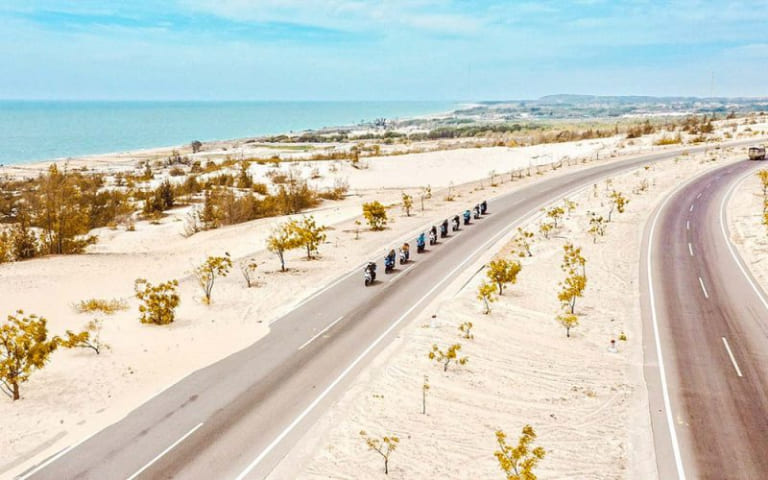
The Mui Ne Sand Dunes are especially beautiful at sunrise and sunset, when the area is bathed in gold. The Red and White Dunes look like soft, otherworldly sculptures against the turquoise sea. People in the area sometimes offer sand-sledding, which is a simple pleasure that makes the dunes a fun place to be.
Ke Ga Lighthouse is not far away from the coast, and it stands there like a silent protector. It’s one of the most peaceful places to watch the sunset in the area. The waves and rough rocks around it make it a great place to breathe in the ocean wind and see the colors fade over the water.
8. Phan Rang to Cam Ranh by Motorbike
The ride from Phan Rang to Cam Ranh is short but very beautiful. It’s a dream for anyone who loves the open coast. This 60-kilometer route goes along beautiful beaches, clear blue waters, and green hills. It feels quiet, open, and very refreshing because it is less commercialized than northern coastal roads.

Bai Dai Beach is a peaceful, uncrowded stretch of sand where you can swim, relax, or just listen to the waves. It’s one of the best things to see along the way. Cam Ranh Bay, one of Vietnam’s most beautiful bays, comes into view farther along. The water sparkles and there are luxurious villas hidden in the hills.
Ninh Hoa is another important stop. It’s a small town known for its traditional salt fields. It is both humbling and beautiful to see workers harvest salt the same way their ancestors did. It reminds us of the area’s long history with the sea.
9. Saigon to Ca Mau Loop | Routes in Southern Vietnam
One of the best ways to get to know the Mekong Delta is to take the Saigon to Ca Mau Loop. The trip takes you from the busy streets of Ho Chi Minh City to the quiet southern tip of Vietnam. Along the way, you will experience the rhythms of river life, fertile farmland, and small towns connected by water. The loop is almost 600 kilometers long and is a great place to have fun and think.
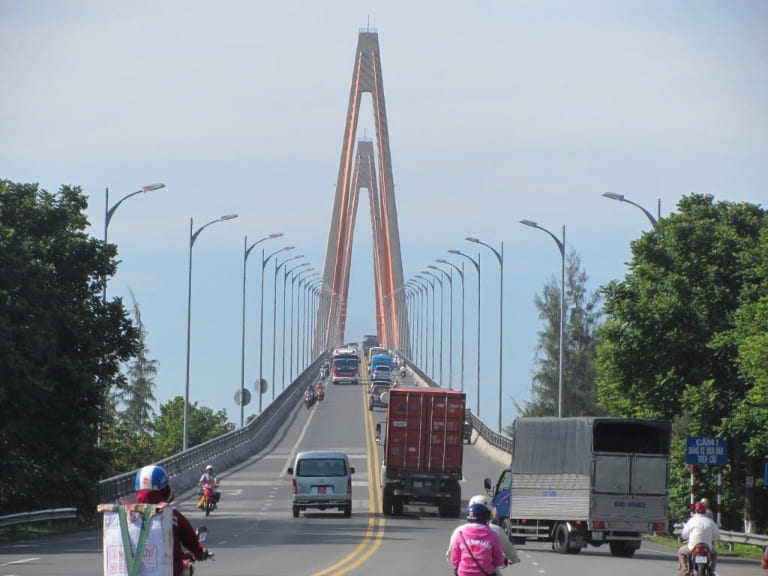
Ben Tre, the famous “Coconut Capital,” is the first place where you can feel the delta’s soul. Islands with endless coconut palms greet you here with handmade coconut sweets, small workshops, and quiet boat rides through narrow canals. As you go south, you come to the busy city of Can Tho, which is home to the Cai Rang Floating Market. Traders glide between boats at sunrise, selling fruits, snacks, and homemade goods. This is an unforgettable picture of life on the river.
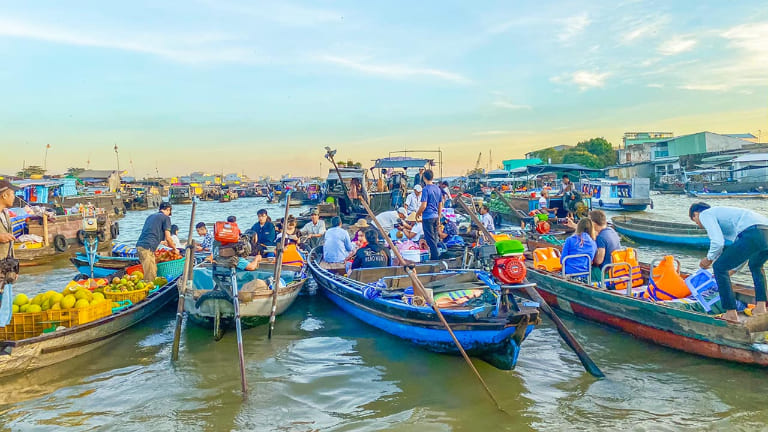
U Minh National Park is full of wild beauty, with mangrove forests and wetlands full of birds. It is located before you get to Ca Mau. It’s a great place to relax and be surrounded by nature. At the end of the loop, you can see where the river meets the sea at Ca Mau Cape National Park. You can feel the quiet power of a landscape shaped entirely by water when you stand at Vietnam’s southernmost point, surrounded by marshes, tide pools, and coastal forest.
10. Khmer Temple-Hopping Motorbike Loop
The Khmer Temple-Hopping Loop is a trip with a lot of meaning for people who are interested in culture, spirit, and history. This route takes you through Long An, Tay Ninh Province, and parts of the Mekong Delta. Along the way, you can see the legacy of the Khmer civilization that once thrived here in the form of beautiful temples, sacred pagodas, and timeless local customs.
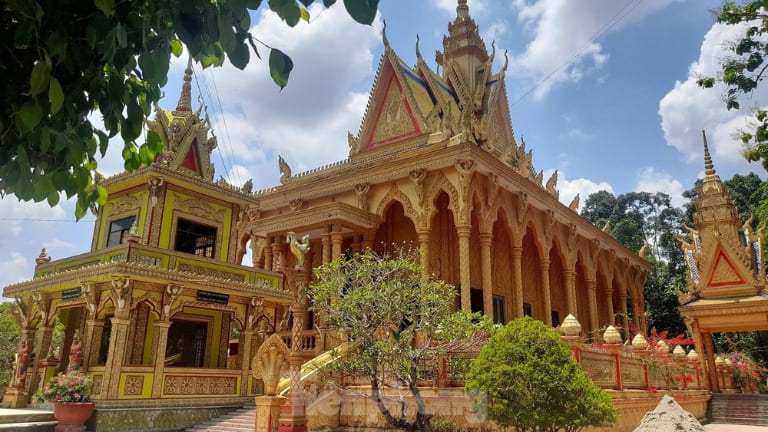
The Cao Dai Temple in Tay Ninh is one of the most amazing places to stop. It is an architectural wonder that combines elements of Buddhism, Taoism, Confucianism, and Christianity into a colorful, otherworldly place of worship. From there, head toward Chau Doc, which is close to the Cambodian border, to see the Ba Chua Xu Temple, a holy site that people love to visit and tell stories about.
Safety Tips for Riding Across Routes in Southern Vietnam
When driving on the open roads of Southern Vietnam, safety is not only smart, it’s also a way to show you care about yourself and the amazing trip ahead. The roads can be busy and unpredictable, especially in busy towns and cities. But if you are careful and plan ahead, your ride can be both exciting and safe. Here are some important tips to help you travel with peace of mind and confidence:
- Wear a Helmet: Your helmet is not only required by law, it’s also the best thing you can do to stay safe on the road. In Vietnam’s busy, always-changing traffic, where motorbikes weave through gaps, pedestrians show up out of nowhere, and cars come from all directions, a good helmet can mean the difference between a scare and a serious injury. Think of it as your best friend.
- Drive Defensively: Vietnamese traffic has its own rhythm, and not everyone follows the rules as closely as you might think. Always be ready for sudden turns without signals, lane changes that aren’t planned, or drivers who go through red lights. Stay alert, be ready to act, and always give yourself room to move.
- Use Your Horn: The horn in Vietnam isn’t an alarm; it’s more like a gentle tap on the shoulder to say, “I’m here.” Use it to let people know you’re there when you pass other cars, enter an intersection, or just want to be seen in heavy traffic. It’s a little thing that can make your ride a lot safer.
- Stay Visible: Visibility is your best defense, especially at dawn, dusk, or when it’s cloudy. Wearing bright or reflective clothes makes it easier for other drivers to see you. Check that your bike’s lights are bright and working well at night, and think about putting reflective stickers on your helmet or gear. The safer you are, the more clearly you can be seen.
- Avoid Night Riding: Riding at night in southern Vietnam can be magical, but it also has its problems, like uneven lighting, unexpected obstacles, and traffic that doesn’t always follow the rules. As much as you can, ride during the day. If you have to drive at night, stay on well-lit roads and stay away from rural or gravel paths where it’s harder to see hazards.
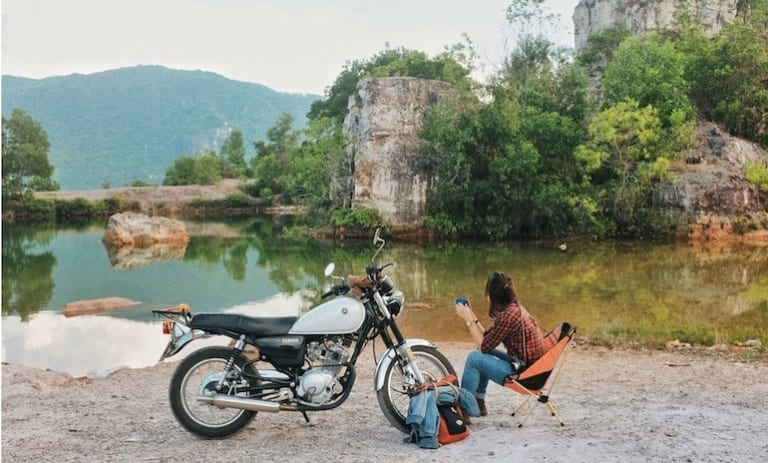
Riding across the picturesque routes in Southern Vietnam will always linger with you. These paths are more than just a trip; they offer an immersion into the heart of Vietnam because to their breathtaking scenery, ride adventure, and cultural insights you acquire along the way. So grab your helmet, start your motorbike, and off you on an adventure you won’t soon forget.
Related Posts:
- Saigon to Phu Quoc Island Motorbike Loop: The Ultimate Vietnam Adventure
- Ho Chi Minh Midnight Motorbike Tour – Discover Saigon’s Nightlife in Style
- Mui Ne to Ca Na by Motorbike: Scenic Coastal Adventure Guide
- Saigon to Hanoi by Motorbike: A Thrilling Journey Across Vietnam





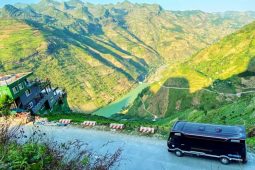


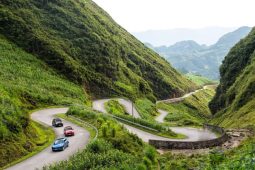


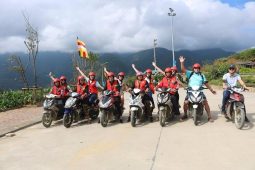
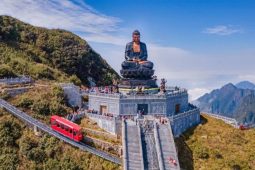
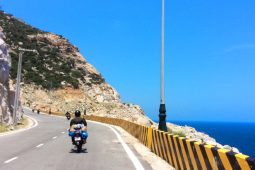
Be the first to comment!